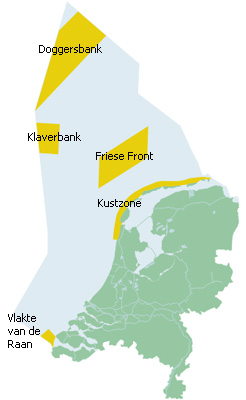Cleaver Bank on:
[Wikipedia]
[Google]
[Amazon]
 The Cleaver Bank ( Dutch: ''Klaverbank)'' is a sandbank in the
The Cleaver Bank ( Dutch: ''Klaverbank)'' is a sandbank in the
 The Cleaver Bank ( Dutch: ''Klaverbank)'' is a sandbank in the
The Cleaver Bank ( Dutch: ''Klaverbank)'' is a sandbank in the North Sea
The North Sea lies between Great Britain, Norway, Denmark, Germany, the Netherlands and Belgium. An epeiric sea on the European continental shelf, it connects to the Atlantic Ocean through the English Channel in the south and the Norwegian ...
about off the west coast of the Netherlands
)
, anthem = ( en, "William of Nassau")
, image_map =
, map_caption =
, subdivision_type = Sovereign state
, subdivision_name = Kingdom of the Netherlands
, established_title = Before independence
, established_date = Spanish Netherl ...
and south of the Dogger Bank
Dogger Bank ( Dutch: ''Doggersbank'', German: ''Doggerbank'', Danish: ''Doggerbanke'') is a large sandbank in a shallow area of the North Sea about off the east coast of England.
During the last ice age the bank was part of a large landmass ...
. The size of the bank is about 1235 km2. The bank is 30-40 metres below sea level.
The Cleaver Bank is an open-sea reef in the terms of the European Habitats directive and has been registered with the European Union as a Natura 2000 site. The bank originated as a terminal moraine of a glacier during one of the Ice Ages.
The surface of the bank partly consists of gravel and larger cobbles. Due to the relatively great depth of the Cleaver Bank, the soil is only seldom, in very heavy weather, moved by wave action. Because the gravel is relatively poor in silt and the transparency is great, there is enough light to allow for the growth of calcareous red algae. The benthic fauna
Benthos (), also known as benthon, is the community of organisms that live on, in, or near the bottom of a sea, river, lake, or stream, also known as the benthic zone.sea anemones and polyps. Rare species living on Cleaver Bank are
Thracia convexa
''Thracia convexa'' is a bivalve mollusc in the family Thraciidae.
Description
''Thracia convexa'' grows to about 6 centimetres (2.4 in) in length. The shell is inflated and brittle and the right valve is slightly larger and more convex t ...
and the Rayed artemis
''Dosinia exoleta'', common name the rayed artemis, is a saltwater clam, a marine bivalve mollusc in the family Veneridae
The Veneridae or venerids, common name: Venus clams, are a very large family of minute to large, saltwater clams, mar ...
. The bank is used by herring for spawning. In addition, the soft coral type dead man's finger is found here.
A 60-metre-deep channel, called the Botney Cut, runs through the Cleaver Bank. Animals like harbour porpoises, minke whales, and white-beaked dolphin live there, mainly in the summer.
Conservation
In 2001, the Dutch government considered the Cleaver Bank as a potential area for mining gravel. After making an Environmental impact assessment the plan was abandoned. The Cleaver bank is in 2015 considered for protection as aMarine protected area
Marine protected areas (MPA) are protected areas of seas, oceans, estuaries or in the US, the Great Lakes. These marine areas can come in many forms ranging from wildlife refuges to research facilities. MPAs restrict human activity for a con ...
. The Greenpeace organisation considered the actions of the Dutch government in this direction too slow and sunk some large boulders on the seabed in May 2015 to increase the nature value. Dutch fishers lifted the boulders on 16 June 2015, because they were afraid the boulders would damage their fishing gear.
References
{{Reflist Sandbanks of the North Sea Shoals of the Netherlands